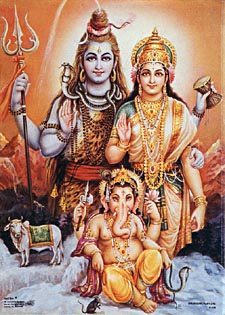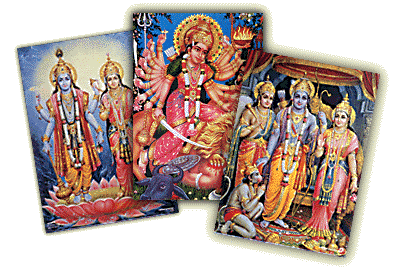Important pooja's in a person's life
The purpose of Pooja is to seek a connection with a particular God. Devotees chant mantras, perform elaborate rituals and whisper their desires to God Himself. Any successful pooja can benefit a devotee’s life and fulfill their desires. However, some particular poojas are exceptionally powerful and super-effective. They are done at some of the most highly revered temples across the country by learned, experienced priests and always have tremendous quick benefits.
Let us have a look at the top 12 Poojas one can perform:
2. Parthiv Shivling Pooja – Parthiv Shivling Pooja is a special pooja dedicated to Lord Shiva. The Parthiv Shivling is a shivling made of Mud/Sand. 108 Parthi Shivlings are made on the bank of Holy river Ganga and Abhishek is done on your behalf. This pooja can be done at the Omkareshwar and Kashi Jyoptirlinga temples and has several benefits. It is an effective cure for Grah Dosh, diseases, misfortune, accidents and reduces stress too.
3. Rudra Abhishek Pooja – Rudra Abhishek Pooja is another auspicious pooja, performed to seek Lord Shiva’s powerful blessings. Rudra abhishek Puja includes Shivling Abhishek with 11 Ingredients and chanting of 108 names of Lord Shiva. Benefits of this pooja include professional and personal success, financial stability, familial harmony and also the removal of planetary dosh.
4. Kaalsarp Dosh Nivarana Pooja – Kalsarp Yog exists when all seven planets (Sun, Moon, Mars, Venus, Jupiter, Saturn, and Mercury) are aligned between Rahu and Ketu. People, who are born during this period, are said to be suffering from misfortune and death-like painful experiences throughout their lives. The Kaalsarp Dosh Nivaran Pooja is quite effective in removing the negative effects of Kaalsarp Dosh, which immensely improves the lives of devotees.
5. Mangal Dosh Nivarana Pooja – Mars or Mangal is a fiery planet and one of the main Navagrahas that hugely influence life on earth. IfMars is placed in any of the houses 1, 4, 7, 8 or 12, in a Horoscope where the rising sign or the ascendant is taken as the first house, Manglik Dosh is said to be formed in that horoscope. Mangal Dosh Nivarana Pooja removes obstacles in personal and professional life, gets rid of Manglik Dosh and encourages positive thoughts and actions.
6. Mahamrityunjay Mantra Jaap – The Mahamrityunjaya Mantra is one of the most powerful Shiva mantras and is also extremely effective in seeking His blessings. It has the power to destroy all negative spiritual effects, creates a Kavach of protection over one’s family and helps one become ambitious. Most obstacles in life can be resolved by this Pooja and one’s past sins are also forgiven.
7. Satyanarayan Katha and Havan – Satyanarayan is one of the most famous forms of Lord Vishnu, who is widely revered by Hindus everywhere. This form of Lord Vishnu is considered as the embodiment of truth and is quite famous amongst Vishnu bhakts. Performing Satyanarayan Pooja during Purnima days is considered particularly auspicious. It helps one become successful in life and improves one’s body and mind. This pooja also removes past sins and encourages familial harmony.
8. Vishnu Pooja – Vishnu is one of the most revered deities of the Hinduism and one of the Trimurti Gods alongside Brahma and Shiva. Devotees all across India perform worship of Lord Vishnu at home and at temples every day, to seek his most auspicious blessings. This special pooja has several benefits. It provides mental, physical and spiritual peace and helps one live a righteous life. It also helps devotees to face difficulties and gain Moksha in the afterlife.
9. Katyayani Pooja – Maa Katyayani is a manifestation of Maa Shakti, who is one one of the key deities of Hinduism. Each year, millions of devotees visit the various Shaktipeeth temples to offer Pooja to Maa Katyayani. It is one of the most important Devi Poojas and has tremendous benefits. Katyayani Pooja can eliminate Manglik Dosh, bring happiness to married life and benefits overall quality of family life.
10. Hanuman Pooja – Hanuman ji is considered as incarnation of Lord Shiva. He is an ardent devotee of Lord Rama. Hanuman Puja is done before sunrise with Hanuman Chalisa Jaap. Performing Hanumanji’s Pooja and Aarti has many benefits for you and your family. This pooja removes fear from the hearts of devotees and gives them courage to face all difficulties of life. It also eliminates Grah Dosh and ensures future prosperity.
11. Ganesh Pooja – Lord Ganesh is one of the most important deities in Hinduism and no other pooja can be performed without worshipping him first. However the exclusive pooja of Lord Ganesh has many amazing benefits for a devotee’s life. Ganesh pooja brings good health, wealth, prosperity and success. It also has the ability to destroy planetary and other dosh.
12. Lakshmi Pooja – Maa Lakshmi is one of the key forms of Shakti and she is widely revered by devotees. She is one of the Trimurti Godesses of Hinduism along with Durga and Saraswati. Lakshmi Pooja has many key benefits for a person’s life. It bestows good fortune, wealth and prosperity and brings joy to family life.
Labels: Info on Puja










